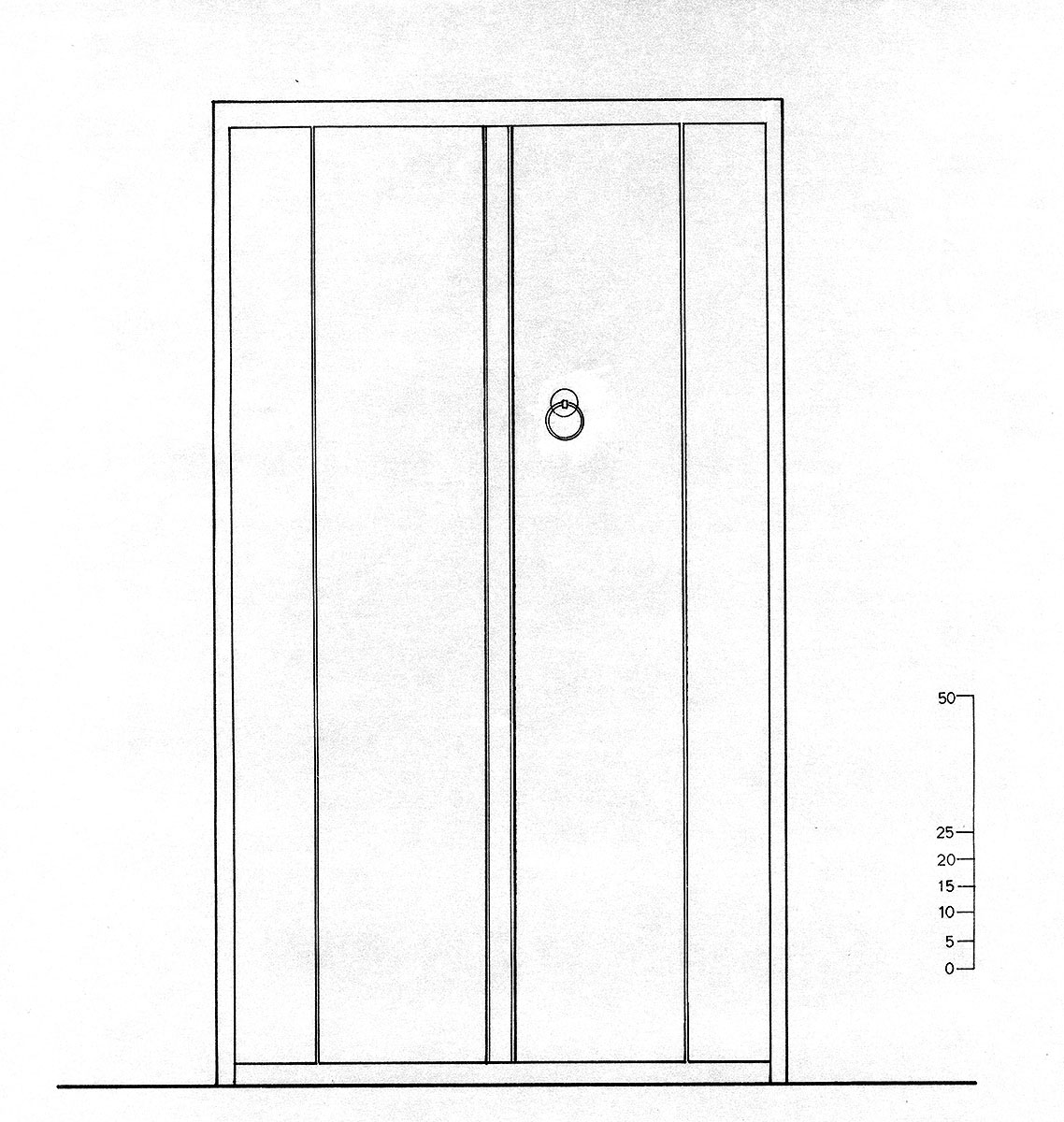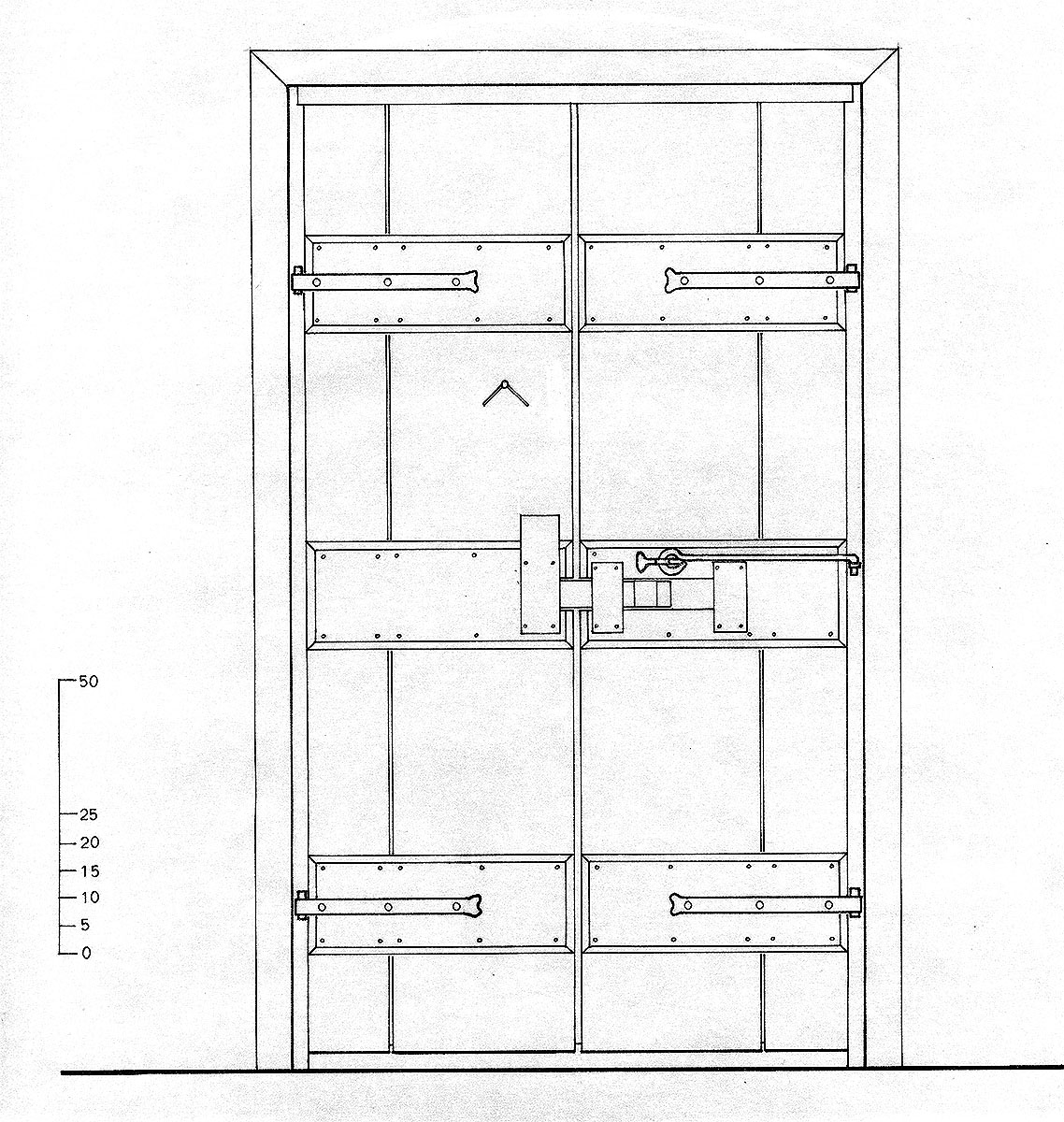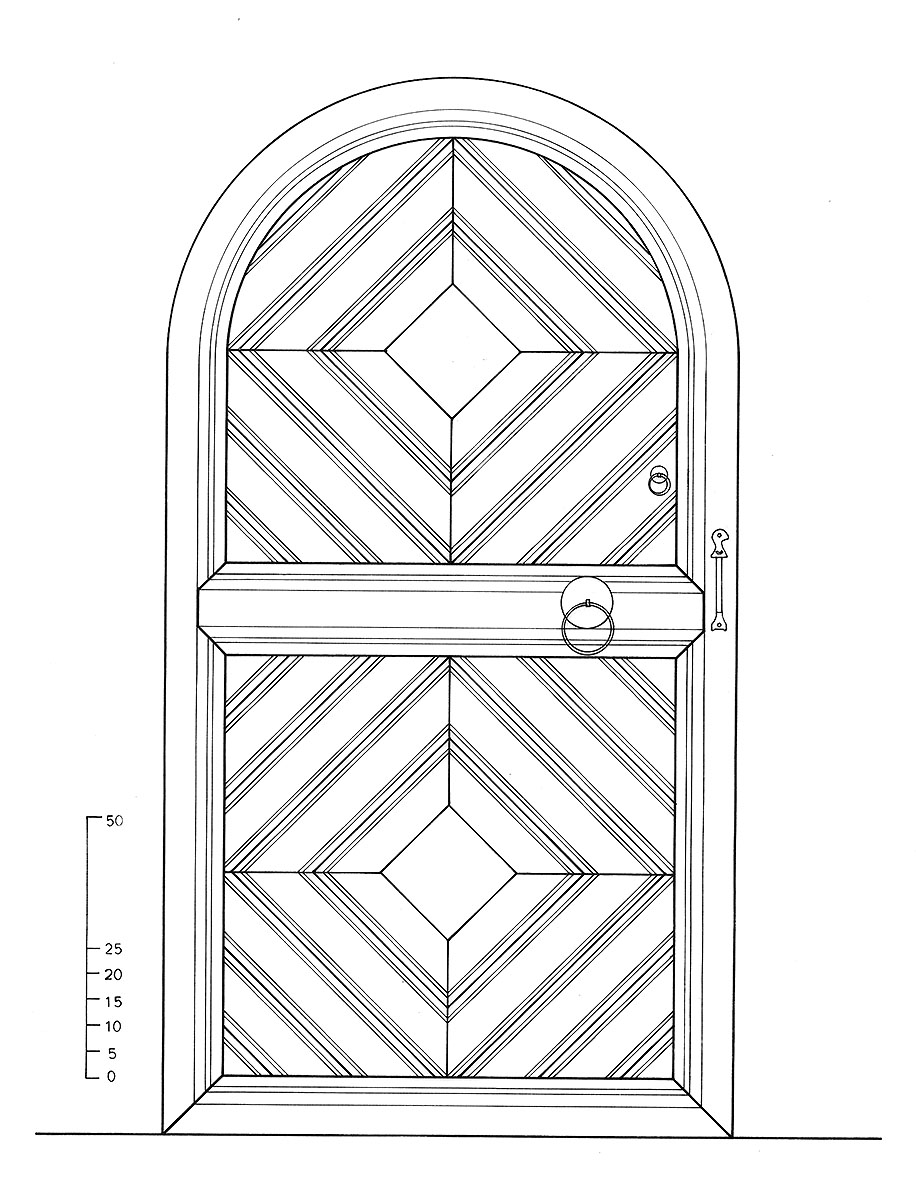Ironwork
Metallic structural elements
Inner Doors
Inner doors are double and more rarely single. Single doors are very old and found in Venetian villas, monastery cells etc.
Double doors are usually set in a rectangular frame. They are simple and each leaf consists of two boards set side by side and forming one side of the door. The other side is made of traverses (usually three) to which the boards are nailed.

Support: inner doors are usually set in a wooden frame in the shorter side of the trapezium formed by the cross-section of the casing. The frame is always flush with the wall. The doors are hung in the same way as entrance doors, on strap hinges. The only difference is in the pintle used in a wooden doorframe. In double doors the use of a retaining strut (kondomiri) is essential to immobilize one leaf.
Security: inner doors have no locks but may be barred with a latch (zeberes) and wooden bar (ambara).
Single doors are usually set in a stone archivolt. They are rectangular and constructed in the same way as simple doors, but with added decoration on one side of the door.

Once the boards have been nailed to the traverses, small mouldings with shallow linear carvings on the two longer sides are nailed over the whole surface of the door, according to a predetermined design. This creates often intriguing patterns on one side of the door. The prevazi (“sill”) is then nailed around the outline of the door. A cross-rail is set between the stiles in the centre of the front surface. Double doors are supported and secured in the same way as single doors.
The construction as a whole is very interesting, letting us admire yet again the way in which local artisans have composed, expressed and demonstrated their talent and wealth of spirit. Doors of a similar style and structure are found in Venetian villas in and around Rethymnon.

